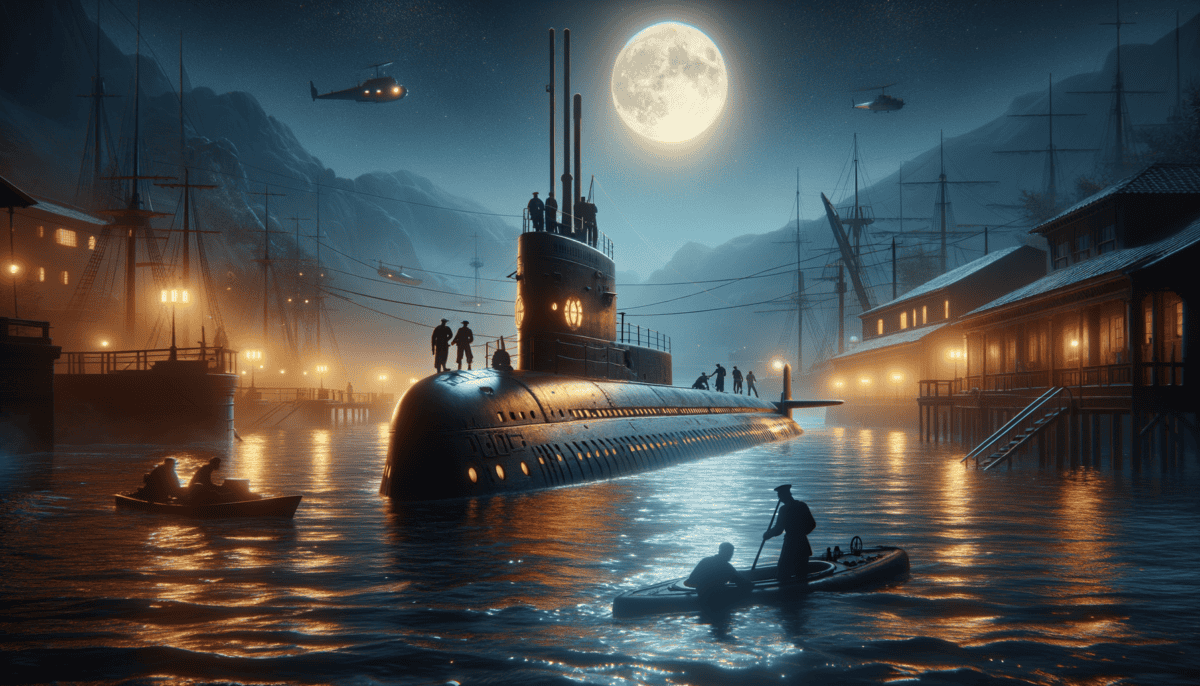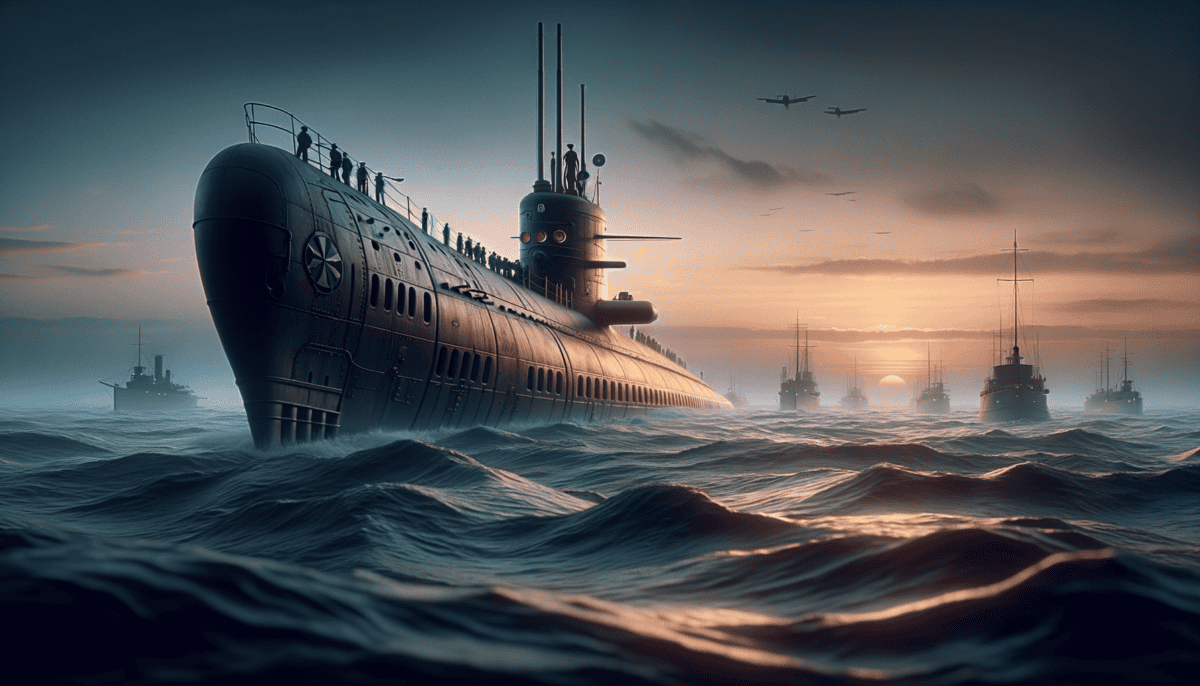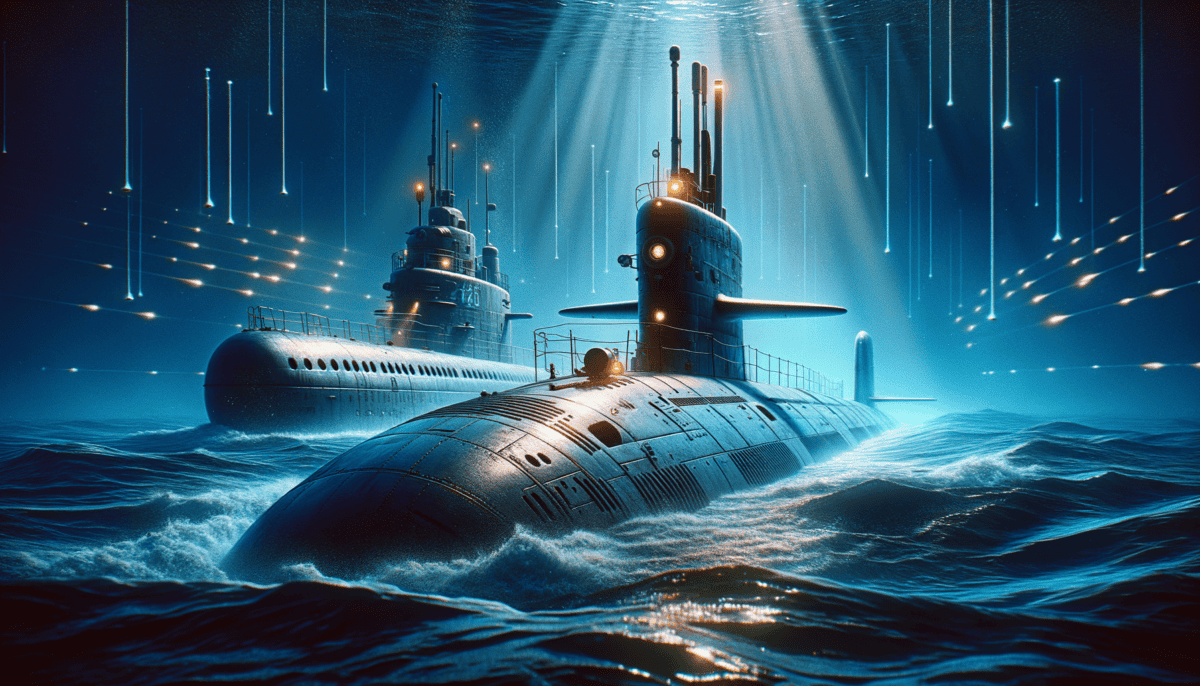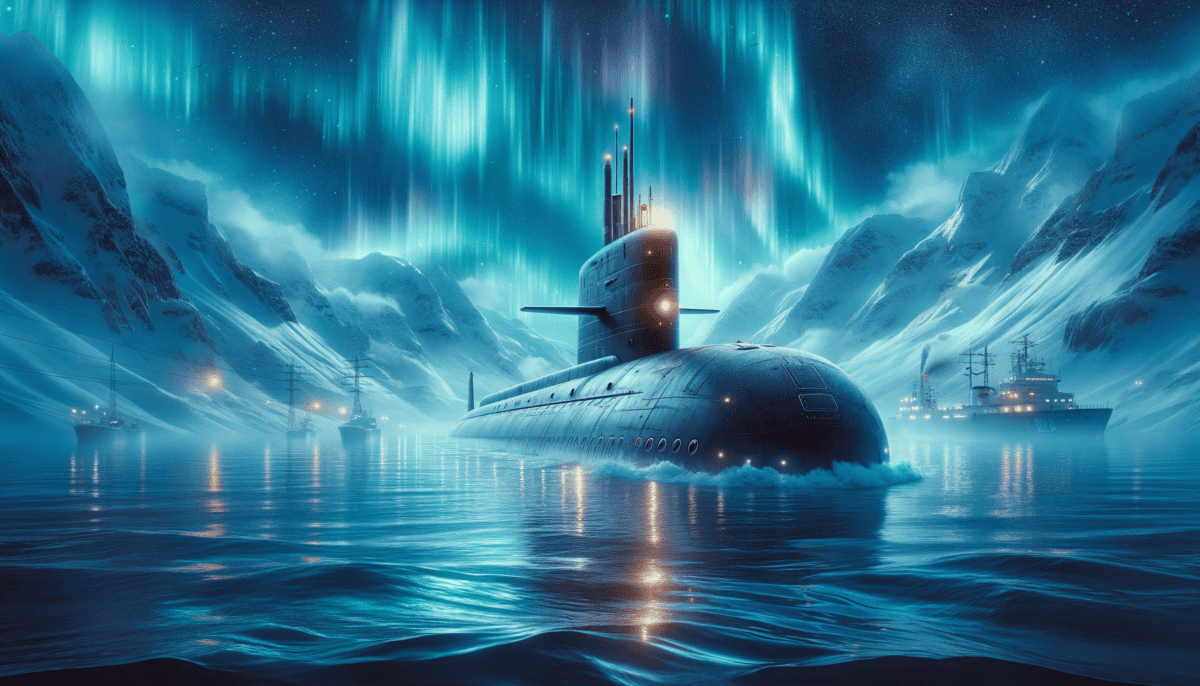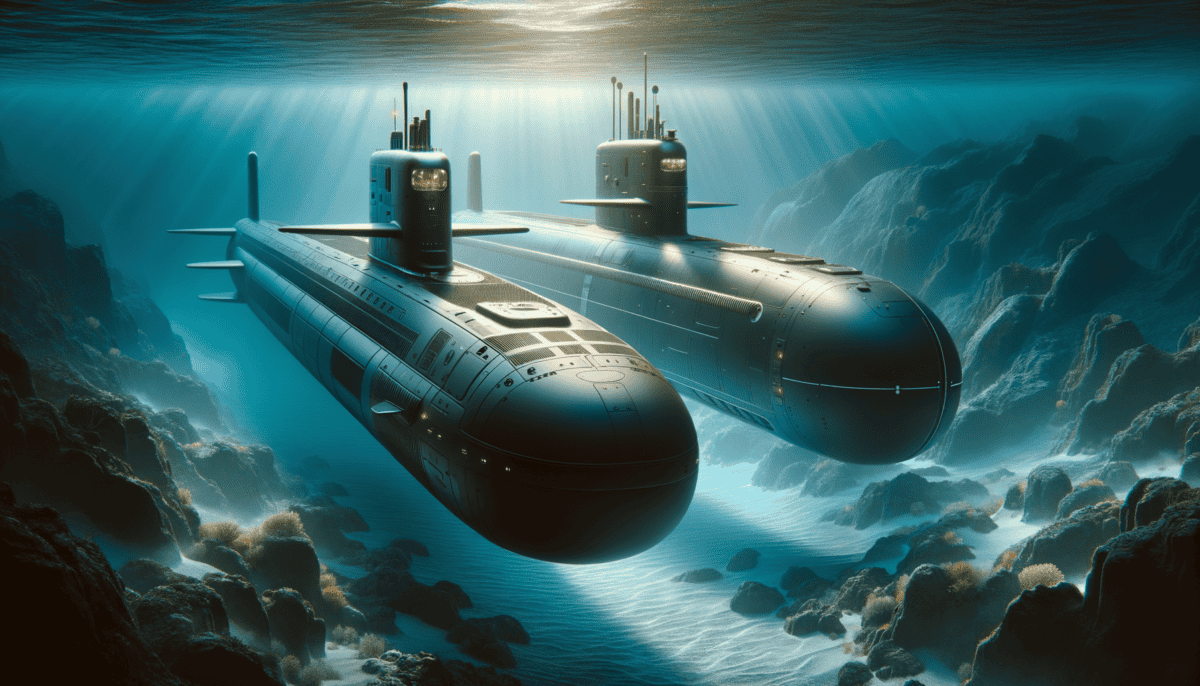The First Underwater Dream
Tom sat at the edge of his seat, eyes wide with wonder as his grandfather opened an old, leather-bound book. "Did you know," Grandpa began, his eyes twinkling, "that people once dreamed of boats that could swim under the water like fish?"
"Really?" Tom leaned closer, his curiosity bubbling like the waves in the pictures before him.
The year was 1776. A clever man named David Bushnell had a big idea. He wanted to build something no one had ever seen before – a boat that could go underwater! He called it the Turtle, because it looked just like a giant wooden egg floating in the water.
"But Grandpa, wasn't it scary to go underwater in a wooden egg?" Tom asked, scrunching his nose.
"Very scary," Grandpa nodded. "The brave soldier who drove it had to turn cranks with his hands and feet to make it move. Imagine riding a bicycle underwater – that's what it was like!"
Inside the Turtle, there was just enough room for:
• One small person
• Hand cranks for moving forward
• Foot pedals for going up and down
• A tiny window to see out
• Special tools for attacking enemy ships
The water was dark and cold around the little wooden vessel. Ezra Lee, the first submarine pilot, could barely see through the murky waters of New York Harbor. His arms ached as he turned the cranks, moving slowly toward the giant British warship ahead.
"What happened next?" Tom bounced excitedly.
"Well," Grandpa smiled, "Ezra tried to attach a bomb to the bottom of the British ship. But the ship's bottom was covered in thick copper, and he couldn't drill through it. He had to turn back, but he made history just by trying!"
“The Turtle showed everyone that submarines were possible,” Grandpa explained. “It was like drawing a picture of your dreams and then making them real.”
People learned important lessons from the Turtle:
- Ships needed to be stronger than wood to go deep underwater
- Sailors needed better ways to see where they were going
- Moving underwater was very hard work
- Air was precious under the waves
Tom's eyes sparkled as he imagined being inside that first submarine. "Were there more submarines after the Turtle?" he asked eagerly.
"Oh yes," Grandpa smiled, turning the page. "Many brave inventors kept trying to make better underwater boats. Each one learned from the ones before. Some worked better than others, but every try taught us something new."
As the sun began to set outside, casting golden light through the window, Grandpa closed the book carefully. "That's just the beginning of the submarine story," he said. "Would you like to hear what happened next?"
Tom nodded eagerly, already excited for tomorrow's tale. In his mind, he could see the brave Ezra Lee, turning those cranks in the dark water, showing the world that sometimes the craziest dreams can become real.
Civil War Underwater Warriors
“Tell me more, Grandpa!” Tom bounced on his chair the next evening. “What happened after the Turtle?”
Grandpa opened the book to a new page, showing a long, dark vessel. “This is the H.L. Hunley,” he said. “It was built during the Civil War, almost 100 years after the Turtle!”
“It looked like a big metal cigar,” Tom giggled.
“That’s right! But unlike the wooden Turtle, the Hunley was made of strong iron,” Grandpa explained. “Eight brave men sat inside, turning a long crank to move the propeller.”
The submarine was cramped and dark. The crew sat in a line, their shoulders touching as they turned the crank together. Their only light came from a tiny candle that helped them see how much air they had left.
“Being in the Hunley was like being inside a long, narrow cave underwater,” Grandpa said. “The men had to be very brave and work together like a team.”
The Hunley had some special features:
- A long pole in front with a bomb on the end
- Two small towers on top for looking around
- Hand-powered propeller to move through the water
- Special hatches for getting in and out
“But wasn’t it dangerous?” Tom asked, his eyes wide.
“Very dangerous,” Grandpa nodded seriously. “The Hunley sank twice during practice runs. But each time, they fixed it and tried again. They never gave up.”
“What happened then?” Tom leaned forward eagerly.
“After sinking the ship, the Hunley disappeared,” Grandpa said softly. “It stayed lost under the ocean for over 130 years! Scientists finally found it in 1995.”
Today, you can visit the real Hunley in Charleston, South Carolina. Scientists are still learning new things about how it worked.
“The Hunley taught people many important things about submarines:
✓ Metal boats worked better than wooden ones
✓ Crews needed more air to breathe
✓ Better ways to see underwater were needed
✓ Submarines could be powerful weapons
“Did the Hunley help people make better submarines?” Tom asked.
“It sure did!” Grandpa smiled. “Engineers learned from everything that went right – and wrong – with the Hunley. Each new submarine was better than the last.”
“The Hunley’s crew changed history forever,” Grandpa said. “They showed that submarines could be real fighting ships, not just dreams.”
As darkness fell outside, Tom imagined those eight brave men, working together in their iron boat beneath the waves. He wondered what exciting submarine stories Grandpa would tell him tomorrow.
World War I – The Great Submarine War
Tom ran to Grandpa’s chair, clutching his toy submarine. “What happened after the Hunley, Grandpa?”
“Well, submarines got much bigger and better,” Grandpa smiled. “By World War I, they were called U-boats, and they changed how wars were fought at sea.”
“These new submarines were different from the Hunley in many ways:”
- They had engines instead of hand cranks
- Crews could stay underwater longer
- They could travel across whole oceans
- They had special tubes to shoot torpedoes
Tom’s eyes got big. “What’s a torpedo?”
“It’s like an underwater rocket,” Grandpa explained. “U-boats used them to sink enemy ships from far away. They didn’t need to get as close as the Hunley did.”
“The U-boats were so good at hiding underwater that people called them ‘sea wolves’ because they hunted in packs like wolf families,” Grandpa said.
The submarines would sneak up on big ships when they couldn’t see them coming. They could pop up, shoot their torpedoes, and dive back down before anyone knew they were there!
“But how did the sailors breathe underwater?” Tom wondered.
“They had special machines to clean the air,” Grandpa explained. “But they still had to come up sometimes to get fresh air and charge their batteries.”
Grandpa showed Tom a picture of sailors on a U-boat’s deck. “See how they’re wearing warm coats? Life on a submarine was cold and wet. The crew had to be very brave.”
New Things About WWI Submarines:
– Radio to talk to other ships
– Periscopes to see above water
– Better air systems
– Stronger hulls to go deeper
The submarines taught everyone that the ocean wasn’t safe anymore. Big battleships weren’t enough – countries needed ways to find and stop submarines too.
“Did they find ways to catch the submarines?” Tom asked.
“Yes, they made special ships with underwater microphones to hear submarines,” Grandpa said. “And they dropped depth charges – big underwater bombs – to try to sink them.”
“It was like a big game of hide and seek under the ocean,” Grandpa explained. “But much more dangerous.”
Tom played with his toy submarine, making it dive and surface. “I bet the next submarines were even better!”
“They sure were,” Grandpa nodded. “World War II brought even bigger changes to submarine warfare. But that’s a story for tomorrow night.”
As Tom got ready for bed, he thought about the brave sailors in their underwater boats, playing their dangerous game of hide and seek beneath the waves.
Silent Hunters of the Deep
Tom bounced excitedly on Grandpa’s knee. “Tell me about the World War II submarines! Were they better than the U-boats?”
“Much better,” Grandpa smiled. “Both sides had amazing submarines. The Americans called theirs ‘fleet submarines’ while the Germans still used U-boats.”
“The submarines fought in two big oceans,” Grandpa explained. “German U-boats hunted in the Atlantic, while American submarines fought in the Pacific.”
“Our submarines were like underwater ninjas,” Grandpa said with a wink. “They were so quiet, the Japanese ships never knew they were there!”
Tom hugged his toy submarine tight. “Did we have brave captains too?”
“We sure did! Let me tell you about Captain Dick O’Kane. He was one of the bravest submarine commanders ever.” ️
Captain O’Kane’s submarine, the USS Tang, sank more enemy ships than any other American submarine. His crew was very good at sneaking up on Japanese ships at night.
– Better radar to find enemy ships
– Stronger hulls to dive deeper
– Special torpedoes that could turn to follow ships
– Air conditioning to keep crews comfortable
“What was life like inside the submarines?” Tom asked.
Grandpa showed Tom a picture of sailors in their submarine. “It was very crowded. The sailors had to share beds – when one got up, another would take his place!”
The submarines had special jobs:
– Finding and sinking enemy ships
– Rescuing pilots who crashed in the ocean
– Taking secret spies to enemy shores
– Bringing supplies to soldiers on islands
“Sometimes submarines would save pilots who crashed in the ocean,” Grandpa explained. “They were like underwater ambulances!”
“But weren’t they scared of enemy ships dropping bombs on them?” Tom wondered.
“They were very careful,” Grandpa said. “They had special listening devices to hear ships above them. When they heard danger, they would go very deep and very quiet.”
“The submariners had a saying: ‘We hide with pride!’ Because being sneaky was their special skill.”
Tom moved his toy submarine through the air like it was diving deep. “How did they know where to find enemy ships?”
“They used something called SONAR – it’s like underwater radar,” Grandpa explained. “It would send out special sounds that would bounce off ships and come back, telling them where the ships were.”
Grandpa picked up Tom’s submarine toy. “By the end of the war, submarines had changed naval warfare forever. No one could sail the seas without worrying about submarines hiding beneath the waves.”
“What happened to the submarines after the war?” Tom asked sleepily.
“That’s when things got really interesting,” Grandpa said. “Scientists found a new way to power submarines – but that’s a story for tomorrow night.”
The Race for Silent Power
Tommy’s eyes grew wide as Grandpa pulled out an old photo album. “Is that a submarine with a funny tower?” he asked, pointing to a black and white picture.
“That’s the USS Nautilus,” Grandpa smiled. “It changed everything about submarines. It was the world’s first nuclear-powered submarine!”
“During the Cold War, America and Russia played a giant game of hide and seek under the ocean,” Grandpa explained. “Both sides built super-quiet submarines that carried important weapons.”
Tommy leaned forward. “How did they stay so quiet, Grandpa?”
“They used special rubber tiles on the outside,” Grandpa whispered. “Like wearing sneakers instead of tap shoes!”
The submarines became so quiet, they could sneak right past enemy ships without making a sound. They were like underwater ghosts!
– Nuclear power engines
– Special quiet propellers
– Better sonar to hear other ships
– Deeper diving abilities
“But what did the submarines do all day?” Tommy asked, making swimming motions with his hands.
“They had very important jobs,” Grandpa said. “Some submarines carried special cameras to take pictures of other countries’ ships. Others listened to secret radio messages.”
Tommy grabbed his toy submarine. “Like spy submarines?”
“Exactly! There was even a submarine called the USS Halibut that found a sunken Russian submarine and took pictures of it!” ️
“The submarine crews had to be extra quiet:
– They wore special soft shoes
– They whispered when they talked
– They used rubber hammers instead of metal ones
– They even had quiet playing cards!”
“Sometimes the submarines would play cat and mouse games,” Grandpa said. “One submarine would try to follow another without being spotted.”
“Did they ever crash into each other?” Tommy asked nervously.
“They were very careful,” Grandpa assured him. “They had special sonar that could hear other submarines from miles away. Like having super-hearing!”
“The submariners said they could hear shrimp snapping their claws from hundreds of feet away!”
Tommy yawned and snuggled closer to Grandpa. “What’s the biggest submarine ever?”
“The Russian Typhoon class,” Grandpa said. “It was as long as two football fields! But even that giant submarine could move quietly through the deep ocean.”
“These submarines helped keep peace during the Cold War,” Grandpa explained. “Both sides knew the other had powerful submarines watching them.”
“Are there still submarines like that today?” Tommy asked, his eyes getting sleepy.
“Oh yes,” Grandpa nodded. “And they can do even more amazing things now. But that’s another story…”
The Future of the Deep
Tommy bounced excitedly on Grandpa’s lap. “Tell me about the new submarines, please!”
“Today’s submarines are like underwater spaceships,” Grandpa smiled. “They have computers that help them do amazing things.”
Tommy’s eyes grew big. “What do they do down there?”
“Some submarines help scientists study the ocean,” Grandpa explained. “They find new fish and explore deep underwater mountains!”
“They even have robot arms to collect samples from the ocean floor!”
Scientists use special submarines to explore the deepest parts of the ocean – places darker than the darkest night!
“Are there treasure hunting submarines?” Tommy asked, thinking of pirate ships.
“Yes! Special submarines help find old shipwrecks,” Grandpa said. “They use lights and cameras to see things nobody has seen for hundreds of years.”
– Protecting ships from bad guys
– Finding underwater treasures
– Studying sea animals
– Mapping the ocean floor
– Fixing underwater cables
“The newest submarines are super smart,” Grandpa continued. “Some can even drive themselves, like robot submarines!”
Tommy pretended to drive an invisible submarine. “Where do they go?”
“They go to places too dangerous for people,” Grandpa explained. “Like under ice or near underwater volcanoes.”
“Some submarines are smaller than your toy car,” Grandpa said. “They can swim into tiny spaces to check pipes or help rescue people.”
Tommy hugged his toy submarine tight. “Will submarines get even better?”
“They sure will!” Grandpa nodded. “Scientists are making submarines that look like fish. They can swim just like real sea animals!”
“Future submarines might use special batteries that never run out of power!”
“Can I be a submarine driver when I grow up?” Tommy asked hopefully.
“Of course you can!” Grandpa smiled. “Maybe you’ll drive a submarine to the bottom of the ocean. Or help build new kinds of submarines we haven’t even thought of yet!”
Tommy yawned and laid his head on Grandpa’s shoulder. “I want to explore everywhere under the sea.”
“There’s still so much to discover,” Grandpa said softly. “The ocean is full of mysteries waiting for brave explorers like you.”
As Tommy drifted off to sleep, he dreamed of diving deep in his very own submarine, exploring the amazing underwater world that humans had only just begun to discover. In his dreams, the endless blue ocean welcomed him, promising adventures yet to come.


